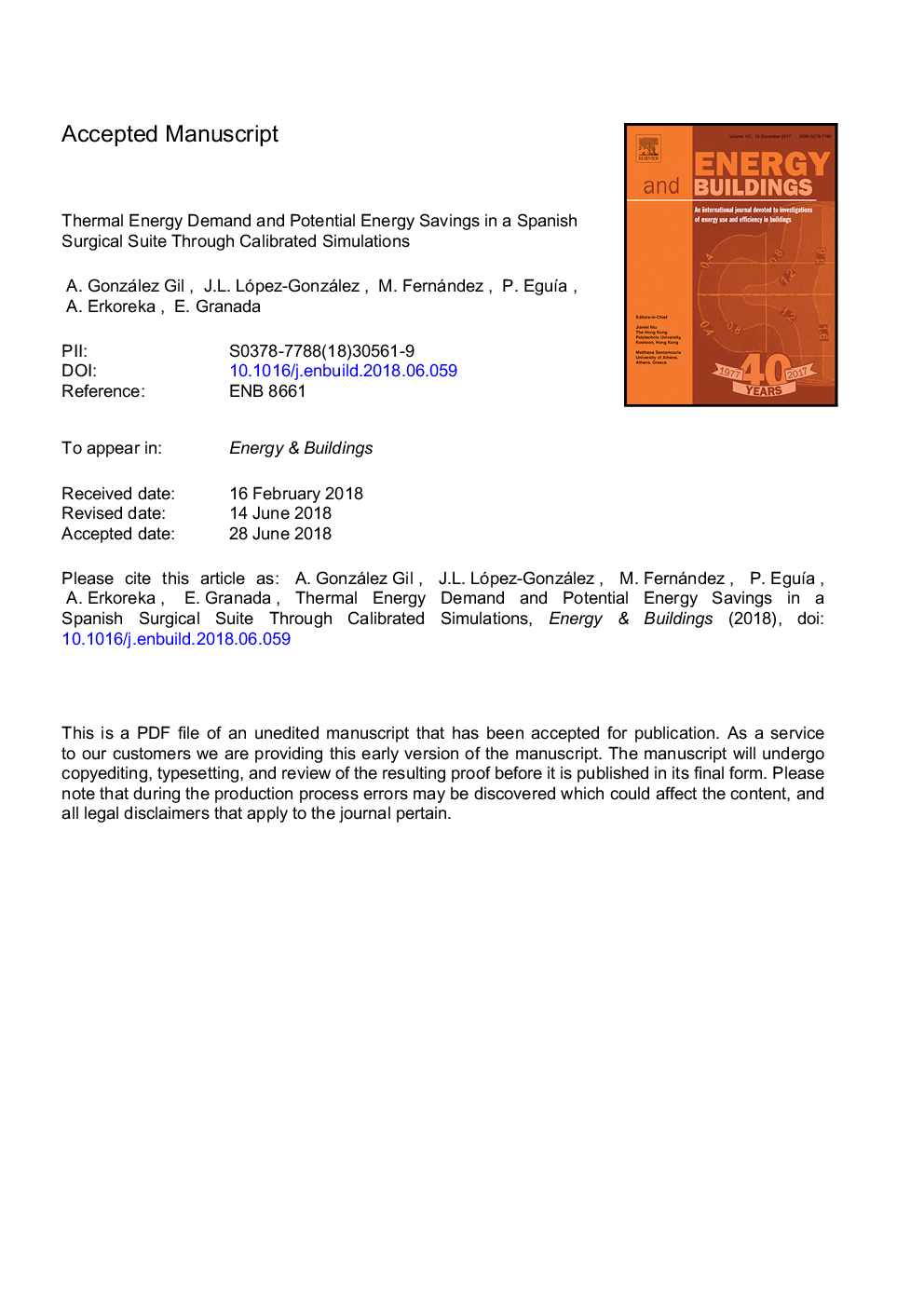| Article ID | Journal | Published Year | Pages | File Type |
|---|---|---|---|---|
| 6727527 | Energy and Buildings | 2018 | 33 Pages |
Abstract
Hospitals present a widely recognized margin for energy conservation due to their elevated final energy use intensity. Specifically, operating rooms are among the functional areas with greatest energy demand in hospitals, given the stringent indoor conditions for patients and surgical staff. However, energy efficiency in surgical facilities has traditionally been overlooked by the scientific literature in favor of guaranteeing adequate air quality conditions. This paper assesses the potential energy savings that could be achieved in a surgical suite in a Spanish hospital by lowering the current ventilation rates to the lowest energy-demanding values recommended by the proper Spanish standard and other international codes. Likewise, the paper assesses the actual hygrothermal and ventilation conditions in the suite based on the results of a continuous monitoring campaign performed for a period of 12 days. Simulations undertaken with a dynamic energy model specifically developed and calibrated for this work revealed that the average energy intensity of the suite is 1021â¯kWh/m2/year (1685â¯kWh/m2/year for operating rooms), with 80% of the total annual thermal demand corresponding to periods of inactivity. In addition, energy savings between 40% and 80% are possible while complying with both national and international standards.
Keywords
Related Topics
Physical Sciences and Engineering
Energy
Renewable Energy, Sustainability and the Environment
Authors
A. González-Gil, J.L. López-González, M. Fernández, P. EguÃa, A. Erkoreka, E. Granada,
